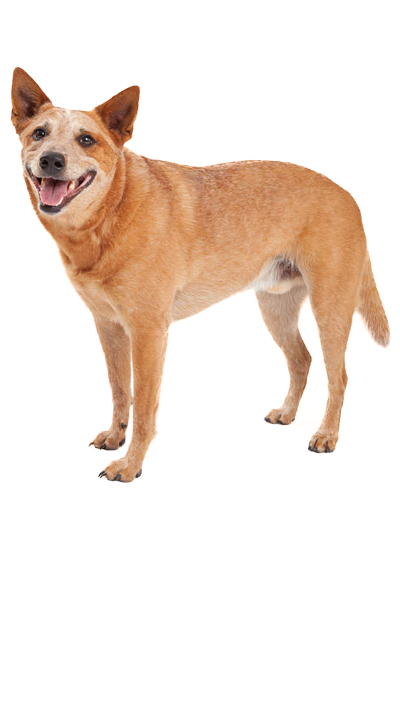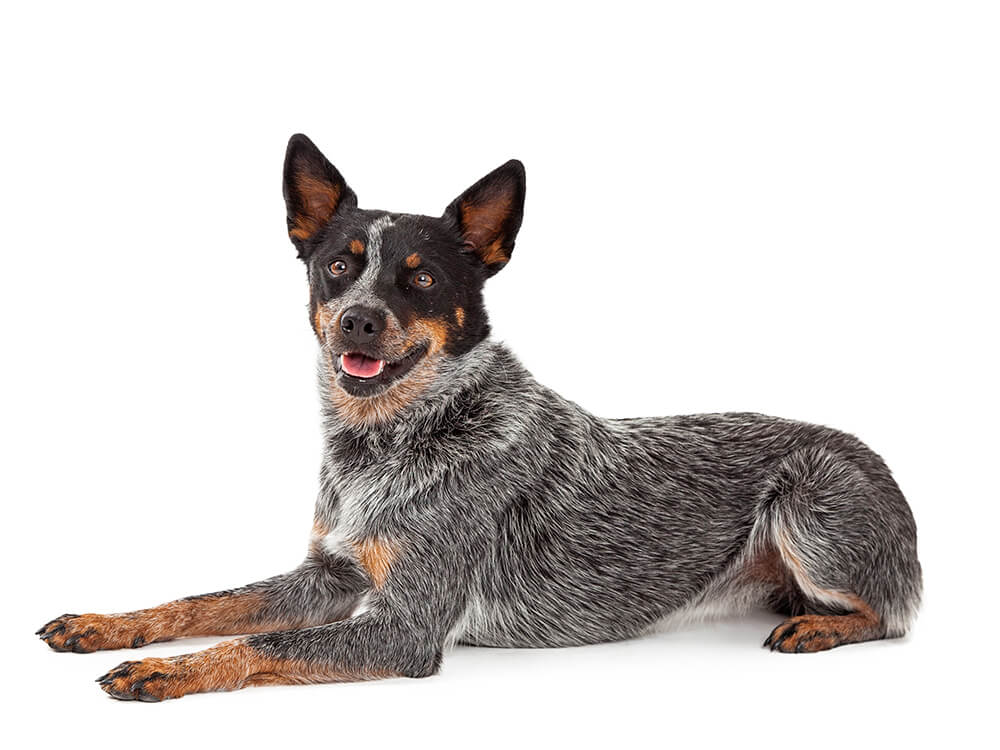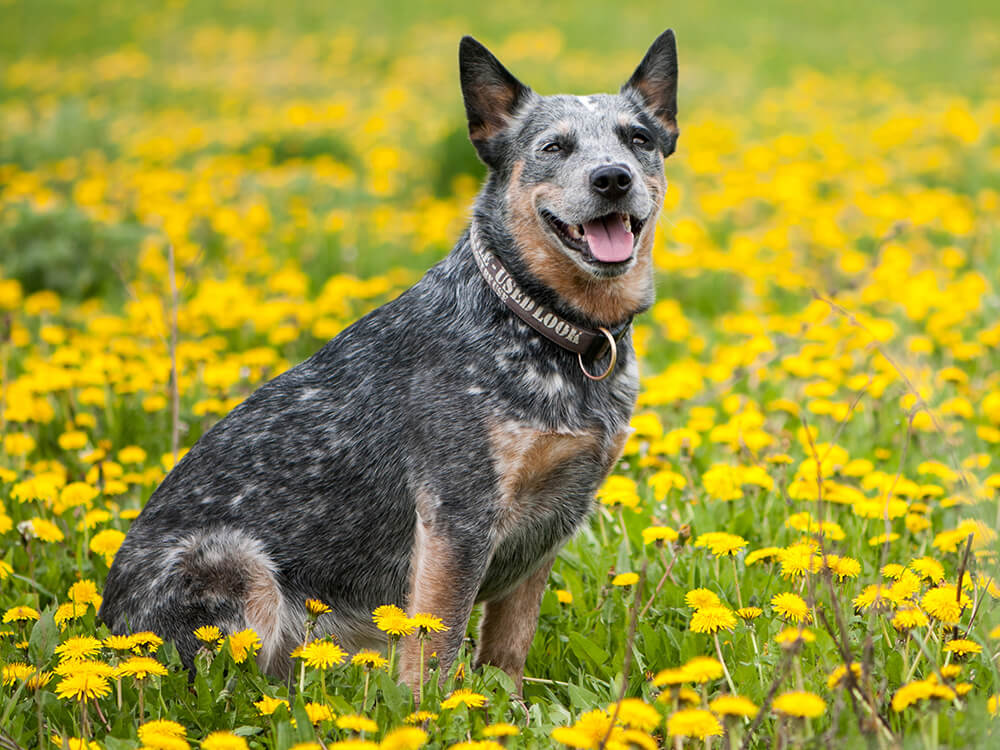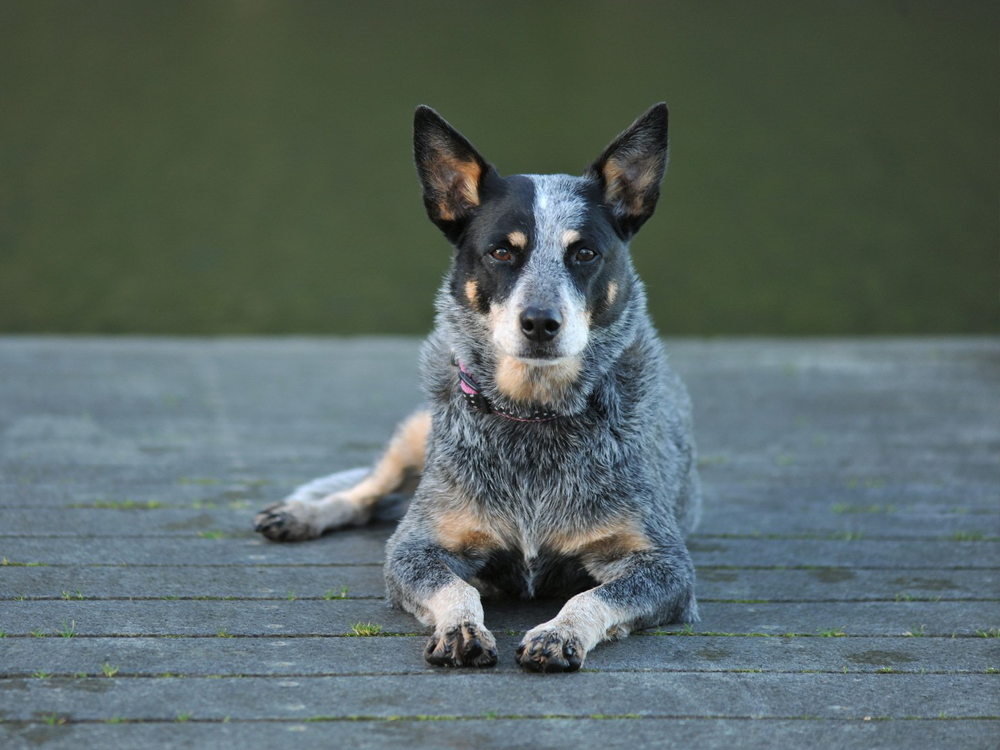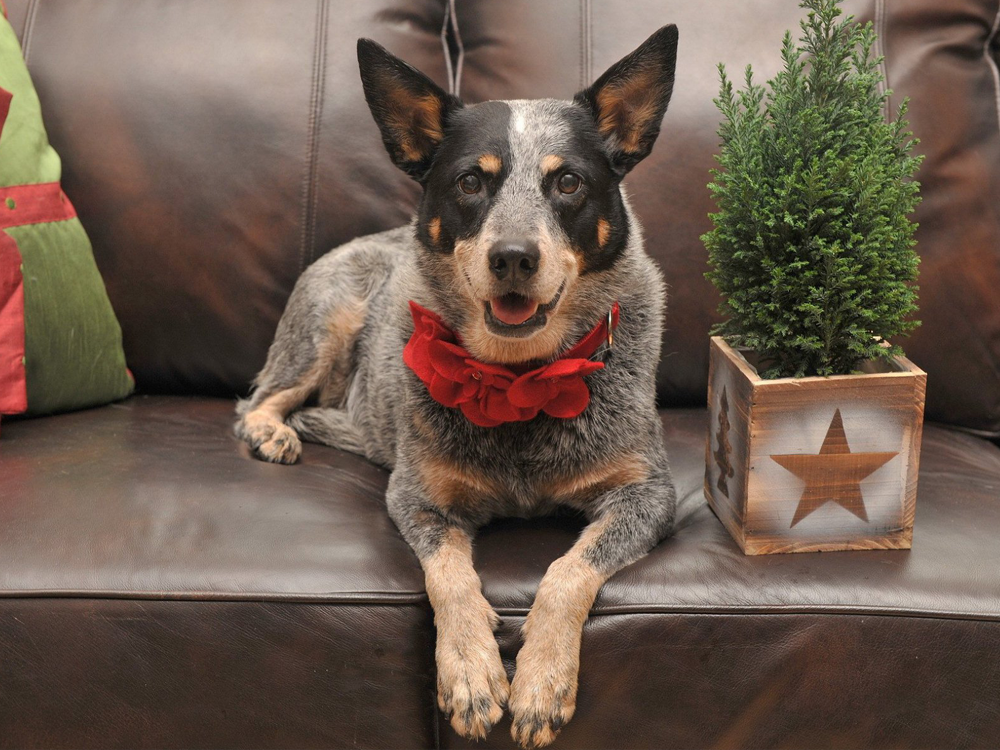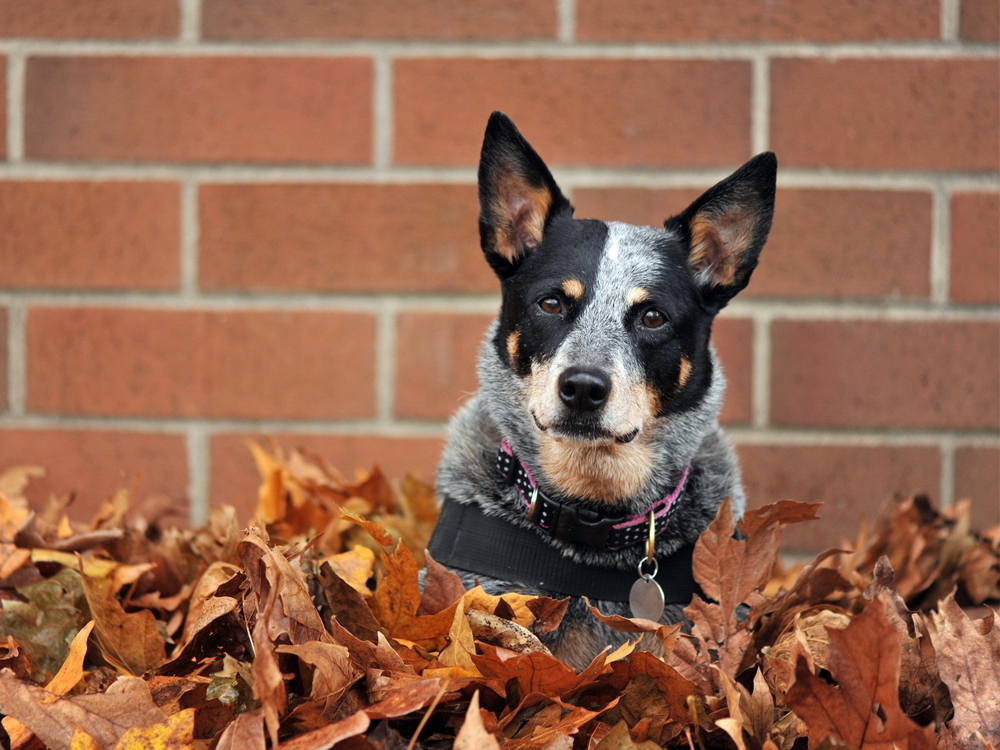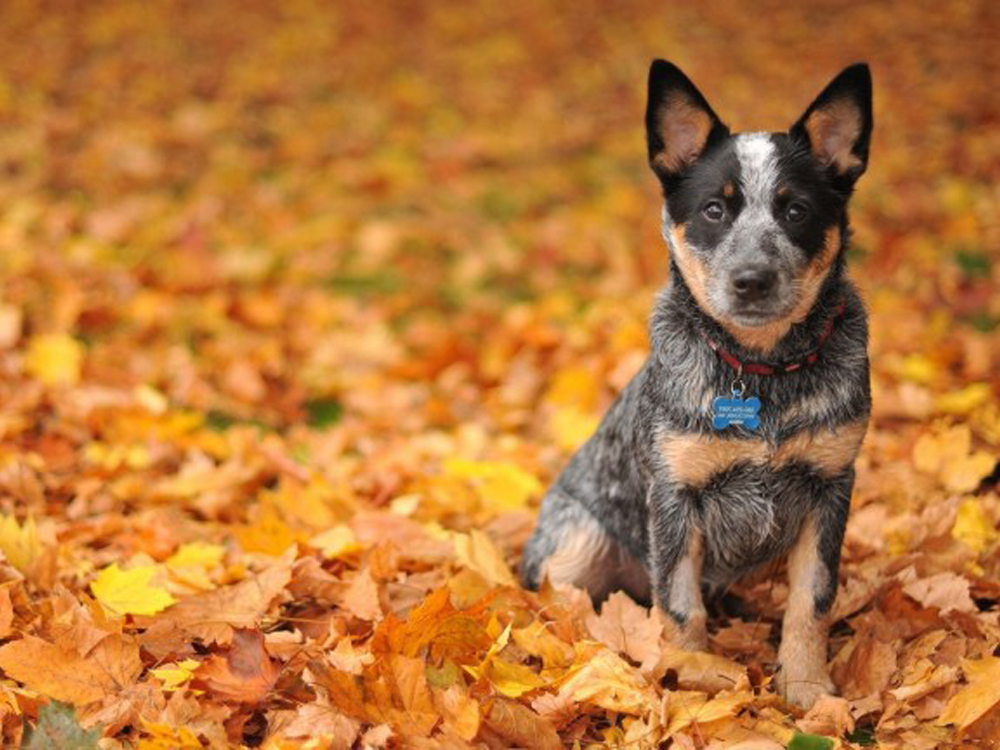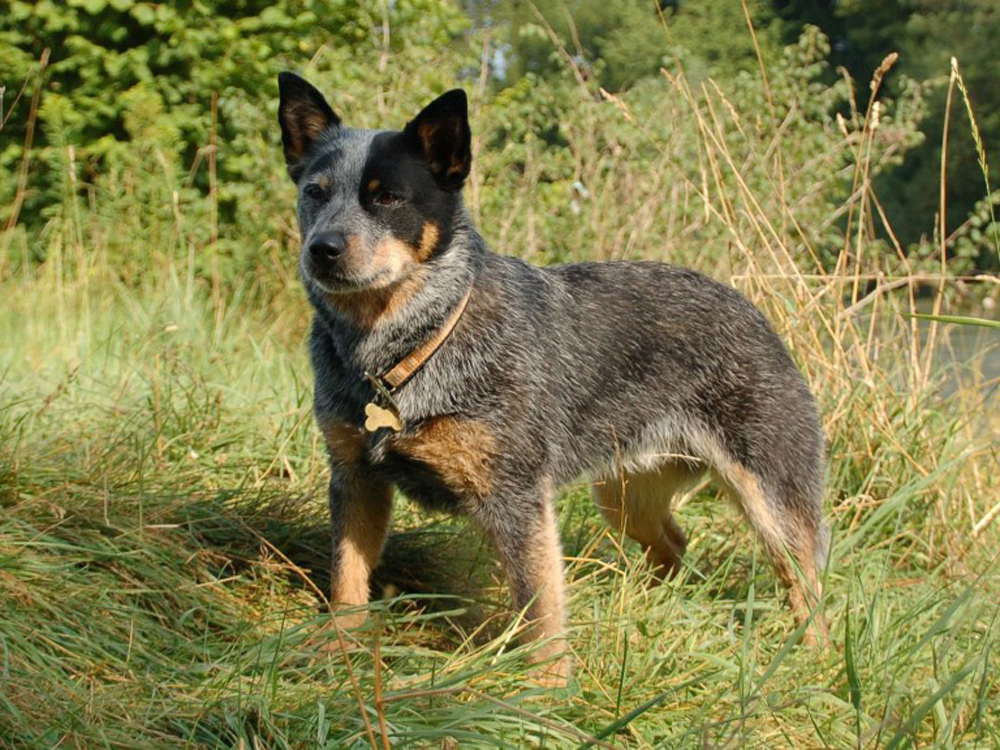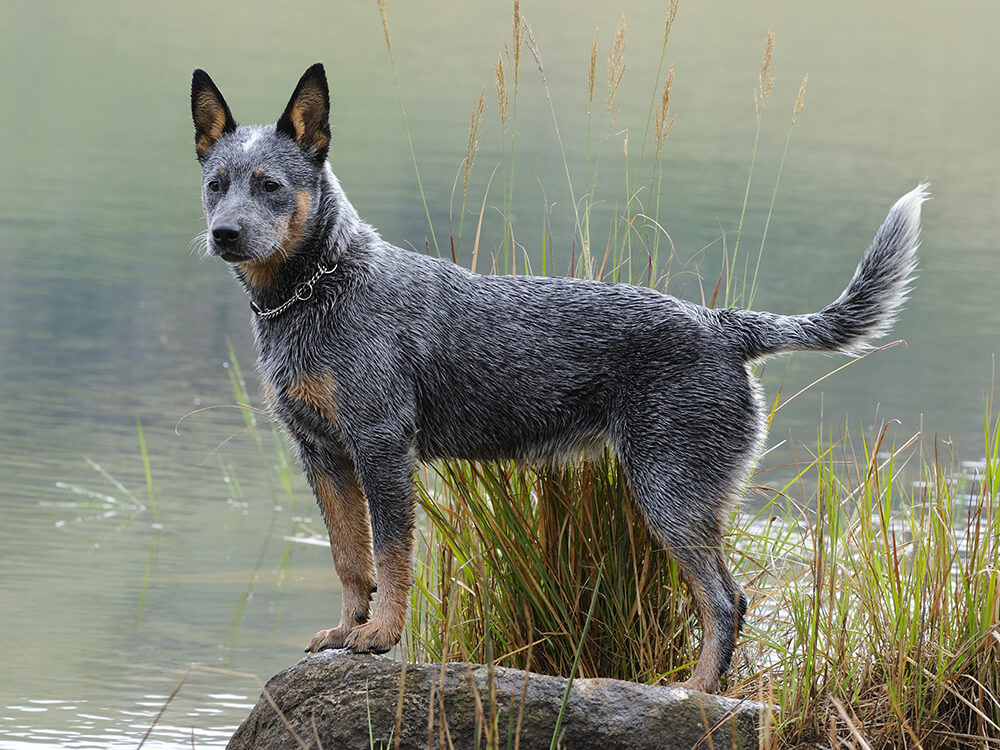
Australian Cattle Dog Breed Pictures
Vital Breed Stats
| Height: | 43 - 48 cm M | 43 - 48 cm F |
| Weight: | 16 - 23 kg M | 12 - 18 kg F |
| Breed Group: | Hound Dog Group |
| Life Expectancy: | 13 - 15 years |
| KC Registered: | No |
Breed Characteristics
| Size: |  |
| Grooming: |  |
| Exercise Level: |  |
| Trainability: |  |
| Barking Level: |  |
| Good with Children: |  |
| Good with other pets: |  |
| Affectionate: |  |
| Protective: |  |
| Cost to Keep: |  |
Give a thumbs up if you love the Australian Cattle Dog

0
More About the Breed
History
The Australian Cattle Dog was bred by Australian immigrants in the late 1800s as cattle-herding dogs. This breed is actually credited to saving the beef industry as it had a precise way of quietly but forcefully herding intense wild cattle by nipping and biting their heels. This is the reason why it was nicknamed 'the heeler.' At that time, people had difficulty herding the wild cows in dangerous and big terrains. It was not possible to bring in herd dogs from cooler areas in their dry weather. People experimented with different breed combinations, incorporating the native dingo as it adapted really well to the Australian desert.
A man named Thomas S. Hall crossed it with two imported blue merle highland collies. He called the offspring Hall’s heelers or blue heelers. The first documented breed standard was written by Robert Kaleski in 1903. The ACD’s main job was to herd up cows from unfriendly locations and bring them in. In 1979, the breed arrived in the UK through the efforts of John and Mary Holmes and was registered with the Kennel Club in the same year.
Appearance
Grooming
The ACD has a straight, short, and weather-resistant outer coat and a thick undercoat. Grooming is generally easy and is known to have a wash-and-wear coat. Bathing can be done when necessary, like when it is really filthy and smelly. Shedding happens in certain times of the year, so the occasional brushing of the short hair would become more frequent. This breed comes in all shades of blue or tan, whilst black streaks are only acceptable for very young puppies.
Apart from maintaining its coat, make sure that other aspects of dog grooming are taken care of. This includes weekly tooth brushing, nail trimming, ear cleaning, and skin inspection for fleas and irritations. Keep grooming a positive experience and start a routine whilst your ACD is a puppy.
Temperament
Intelligence
The breed used to nip the cattle it herded and has retained this potentially dangerous habit. It still has a tendency to herd people, especially young kids who run and scream, and nip their feet. To lessen nipping and biting, proper training and supervision are required. In order for training to be effective for this energetic pooch, it should be in the form of games. Training will help adopt a routine different from its herding ancestors.
Dog breeds do have certain predisposed characteristics. However, other factors like environment, training, and socialisation help build its overall personality, intelligence, behaviour.
Nutrition
- Senior and less active: up to 1,100 calories daily
- Typical adult: up to 1,130 calories daily
- Physically active/working dog: up to 1,400 calories daily
Feeding
Health
Exercise
Cost of Ownership
An important consideration on whether you will buy or adopt a dog is your financial capability. Can you afford to own one? If you planning to buy, the price range of a puppy is £500 to £800. Apart from feeding your Australian Cattle Dog high-quality food (up to £50 a month), you also have to buy basic equipment and supplies for it to live comfortably (initial cost of up to £200).
Preventive care (as much as £1,000 annually) is an aspect of pet ownership that should not be overlooked. Your dog needs to have veterinary routine check-ups, vaccinations, and flea/worm treatments. Another important expense is pet insurance (basic coverage ranging from £20 to £40) to have a safety net when your ACD becomes ill.
Is an Australian Cattle Dog Right for You?
- The Australian Cattle Dog is a medium dog that is a great companion.
- It is great for families with an active lifestyle as it needs plenty of exercise.
- It has a wash-and-wear coat.
- The ACD gets along with kids, but has a tendency to nip. Through proper training and supervision, this behaviour can be curbed.
- It is a great protector of the family.
